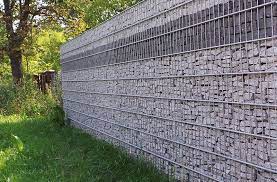
Gabion: Wired for Strength
Gabions, usually disregarded inside the arena of building, offer a plethora of advantages that will make them a progressively well-known choice for technicians, architects, and landscapers equally. From erosion handle to cosmetic charm, gabions offer sensible strategies to a wide range of development problems. In this article, we’ll explore the key benefits of building with gabions (gabiony) and spotlight their importance in contemporary building practices.
1. Erosion Handle and Slope Stabilization:
Among the principal advantages of using gabions is their effectiveness in controlling deterioration and stabilizing ski slopes. Whether or not along riverbanks, coastlines, or hillsides, gabions give a strong obstacle against garden soil erosion brought on by water circulation and weathering. By retaining dirt and protecting against sedimentation in normal water bodies, gabions help maintain the integrity of all-natural scenery and protect system through the harmful results of deterioration.
2. Architectural Steadiness and Flexibility:
gabions (gabiony) provide remarkable architectural stability, making them well suited for a variety of design applications, including maintaining wall space, bridge abutments, and culvert shops. The flexibleness of gabion constructions allows them to get accustomed to alterations in ground and endure active loads and pushes, such as seismic action and terrain resolution. This built in stableness lowers the danger of malfunction and guarantees the long life of gabion buildings in diversified ecological problems.
3. Lasting Creating Practices:
Inside an age increasingly focused on sustainability, gabions appear as an eco friendly building option. Contrary to classic materials like cement or metallic, which in turn have higher co2 footprints and environment affects, gabions utilize locally sourced materials and require small electricity for production and set up. Moreover, gabion constructions can be simply dismantled and re-cycled after their lifespan, minimizing spend and source of information consumption.
4. Aesthetic Improvement:
Over and above their functional rewards, gabions also offer aesthetic appeal, improving the visible panorama of downtown surroundings, park systems, and gardens. Natural consistency and hue of the rocks, combined with geometric designs in the wire fine mesh, produce visually stunning characteristics that merge harmoniously making use of their environment. Architects and creative designers appreciate the versatility of gabions, which can be formed and personalized to match a variety of architectural types and layout personal preferences.
5. Expense-Usefulness and Reduced Upkeep:
Coming from a monetary perspective, gabions present important saving money over standard building materials. Their basic installment method demands fewer labor time and equipment, reducing design charges and venture timeframes. Additionally, gabion components call for minimum on-going upkeep, as they are inherently immune to rust, weathering, and biological destruction. This results in long term saving money for property owners and facilities administrators.
In conclusion, the benefits of developing with gabions are manifold, encompassing erosion handle, structural steadiness, sustainability, cosmetic enhancement, expense-performance, and lower maintenance demands. As design practices consistently progress towards far more lasting and resilient options, gabions stick out as a sensible and adaptable selection for addressing the challenges of the modern developed setting.